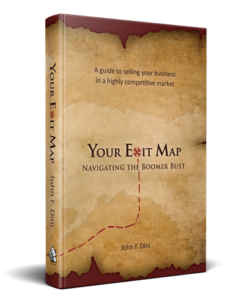There is ample evidence in the marketplace that Baby Boomers’ influence is still powerful. From walk-in tubs to stand-up bikes, and from pharmaceutical commercials to river cruises, Boomer tastes are catered to in every market.
We all know the sterotypes of the “typical” Boomer. Goal oriented, workaholic, spendthrift, and oriented towards accumulating material evidence of their achievements. They identify work and position with their value in society. We have also discussed often in this space the issues of employers who have to replace the corporate knowledge base of retiring Boomers.
Clearly, one way to keep the economy moving upwards is to encourage Boomers to work longer and accumulate more. The more they earn, and the more they spend, the better we all fare. (Except, of course, for the Gen Xers who are behind them in the promotion queue.)
Boomers Influence Legislation
One really obvious example of this is the SECURE (Setting Every Community Up For Retirement Enhancement) Act, which took effect on January 1, 2020. It was missed by many, gliding through as a budget attachement, and absent the histrionics that seem to accompany any legislation in Congress.
What could be so important and universally desirable that both parties would happily cooperate? Getting the Boomers to work longer. How do you accomplish that? Give them the opportunity to accumulate even more than the $17 Trillion (one year’s GDP) that they already hold in personal assets.
The SECURE Act is aptly (if somewhat elaborately) titled. Boomers who are more financially sound will be less of a burden on the public sector. That’s the Community benefit referred to in the title. In addition, as Social Security feels the pinch of paying back those who funded the first two generations of beneficiaries, it theoretically will reduce the outcry when benefits are reduced.
The New Terms of Retirement
 The act doesn’t provide Boomers with additional benefits. Instead, it gives them the chance to pay more into the system. Here are the major changes.
The act doesn’t provide Boomers with additional benefits. Instead, it gives them the chance to pay more into the system. Here are the major changes.
- The age at which you must start taking Required Minimum Benefits from your employer or individual retirement plans has been raised from 70 1/2 to 72 years old. (Social Security benefits, however, still max out at age 70- even though you would still have to make SS contributions.)
- You can continue to pay into your retirement plan of any type for as long as you want- there is no longer a cutoff age for contributions.
- Small business owners may now group together to offer retirement plans. Formerly, many were too small to bear the costs of having a 401K, for example.
- Part time employees (read: semi-retired Boomers) can now participate in employer retirement plans.
- Employer plans may now offer annuities for lifetime income among their options.
- Inherited retirement accounts must be spent in ten years- they cannot be rolled to another generation.
Are you getting the message? We’d like you to to work longer, pay more in taxes, and (at least theoretically) leave more behind when you go.
Why is this indicative of the Boomers, influence? Because that’s exactly what we seek. With health care, exercise and nutrition so much better than for previous generations, we were saying that 60 is the new 40. Now we are saying that 70 is the new 50.
No one is forcing us to work longer. They are just recognizing that many of us want to. C’mon Boomers, you fueled the longest sustained expansion is US history (40 years from 1968-2008.) Can’t you do just a little bit more?
 Where you are now is a calculation of your current liquid net worth. “Liquid” implies assets, such as stocks and bonds, that you can use for living expenses. Your home isn’t liquid. Income property isn’t liquid, but you can apply the rents to your retirement needs. Don’t include the value of your company at this stage. We’ll get to that in a moment.
Where you are now is a calculation of your current liquid net worth. “Liquid” implies assets, such as stocks and bonds, that you can use for living expenses. Your home isn’t liquid. Income property isn’t liquid, but you can apply the rents to your retirement needs. Don’t include the value of your company at this stage. We’ll get to that in a moment. Your Exit Map, Navigating the Boomer Bust is now available on
Your Exit Map, Navigating the Boomer Bust is now available on